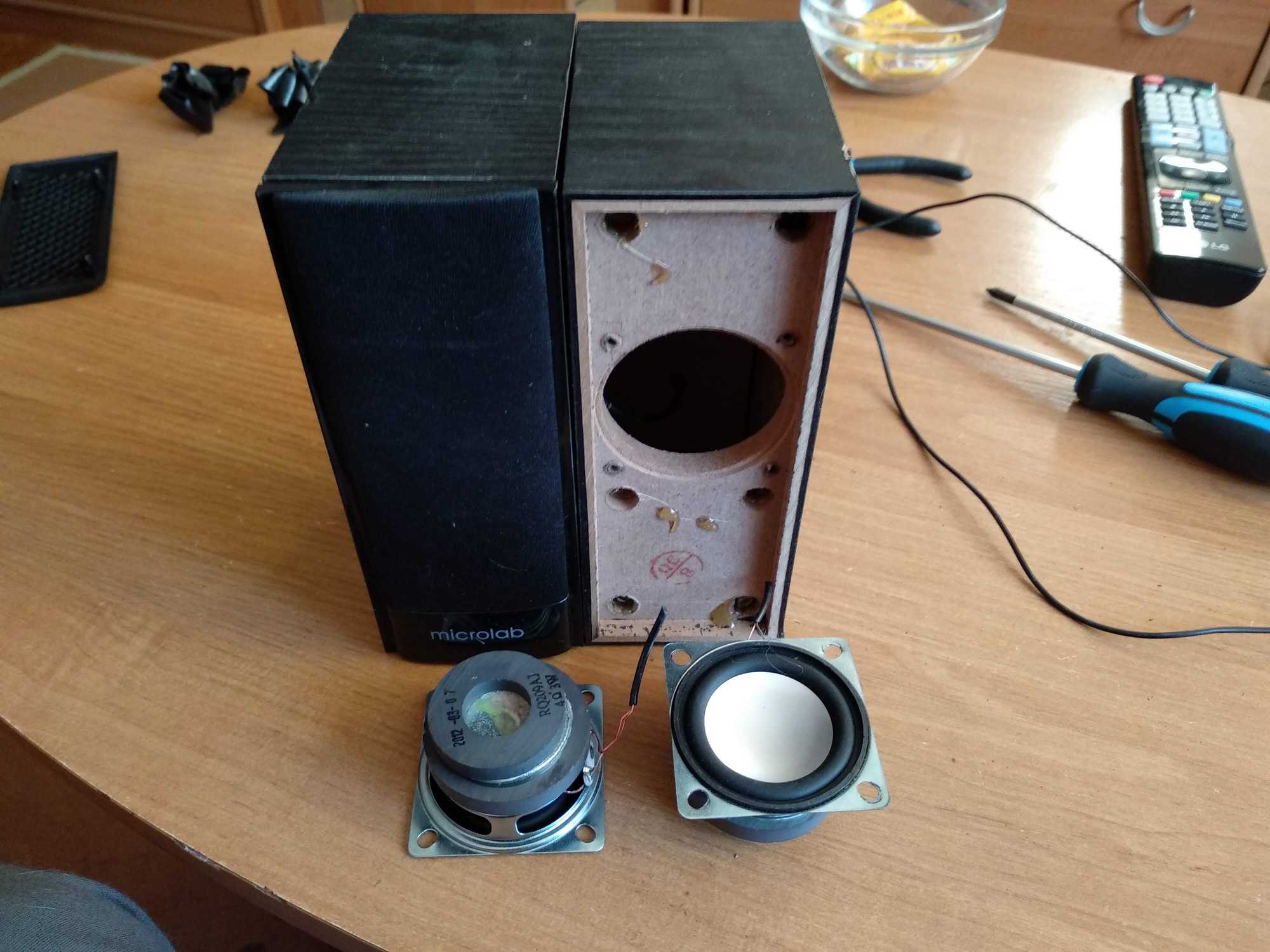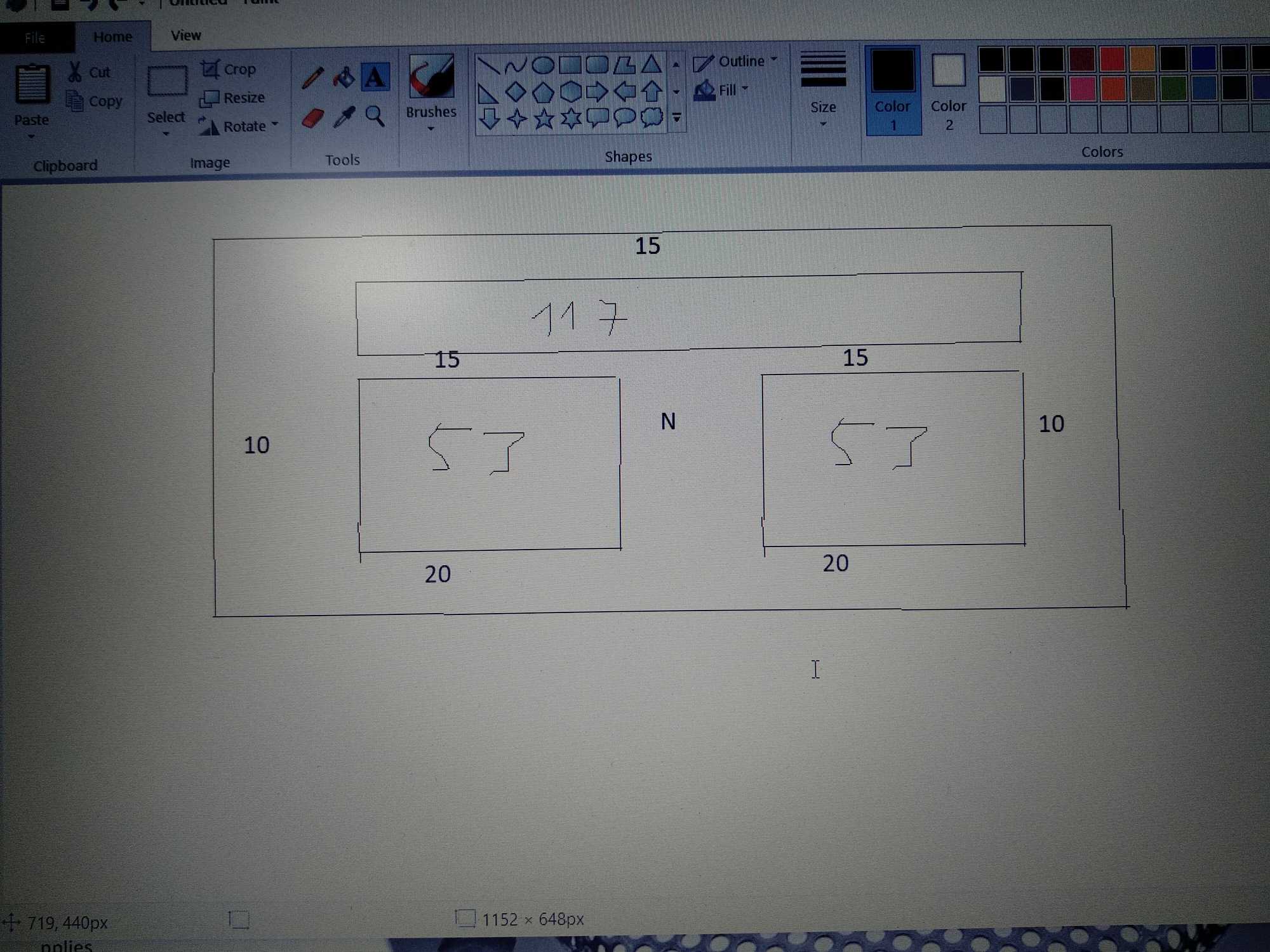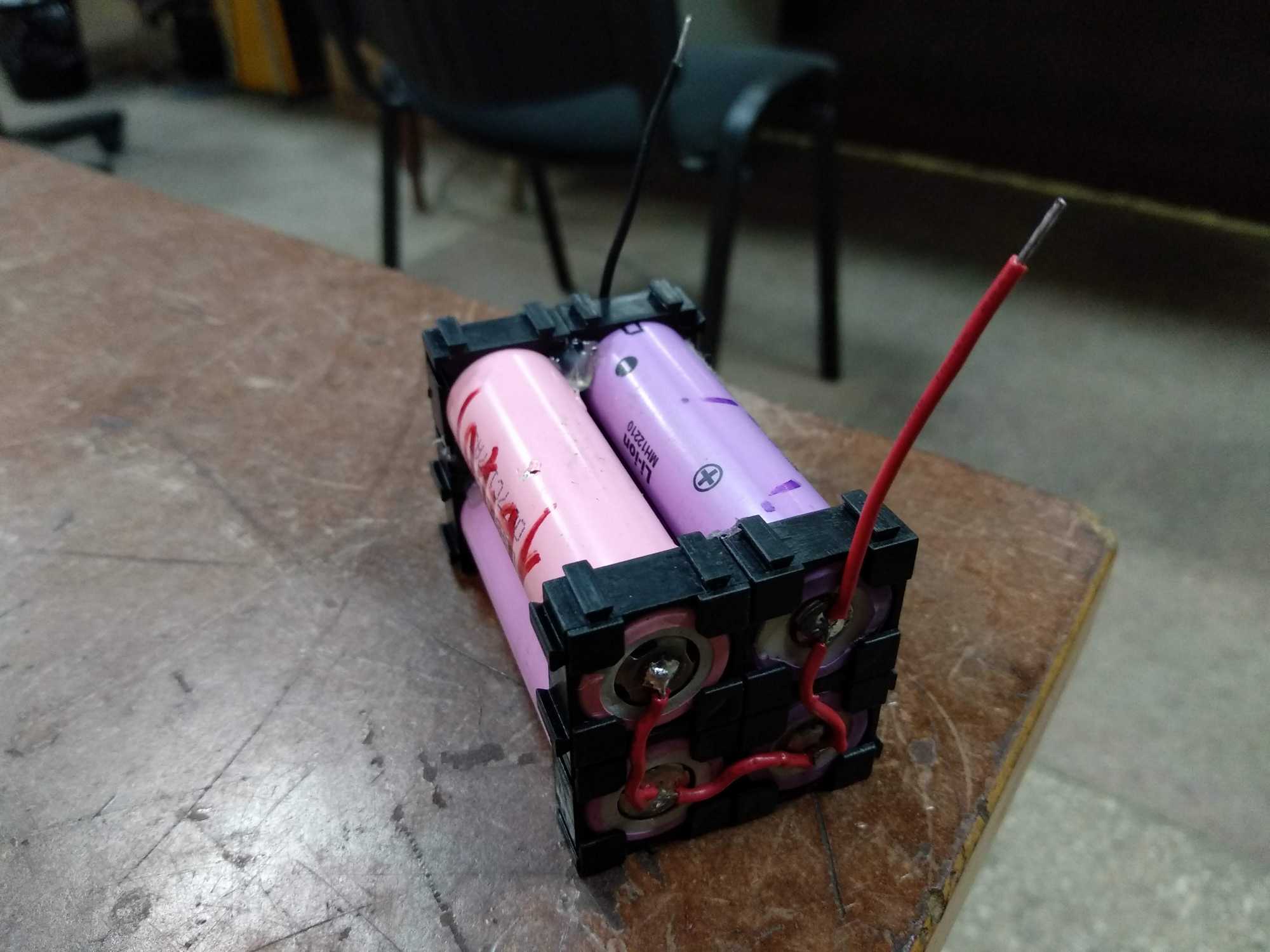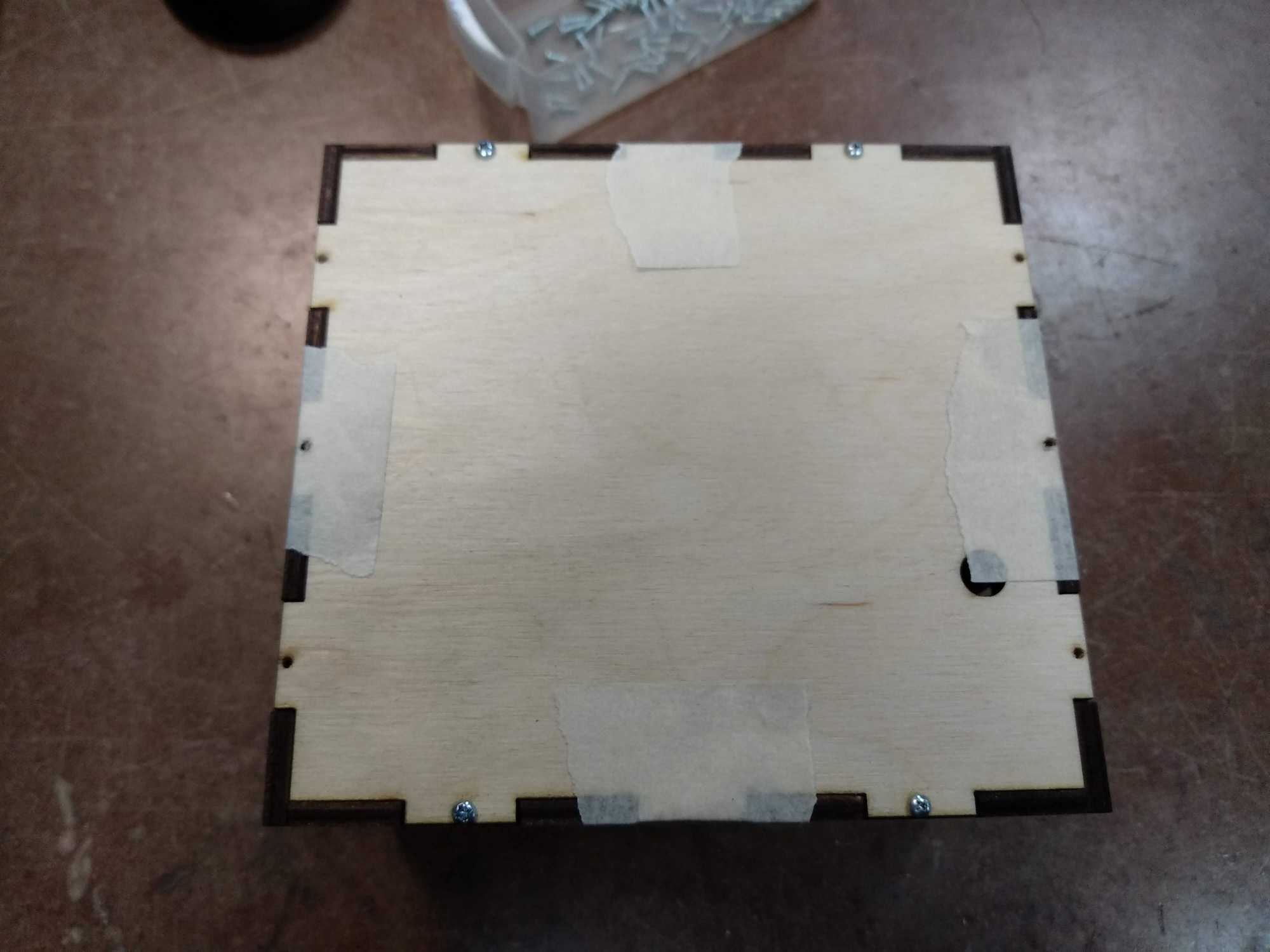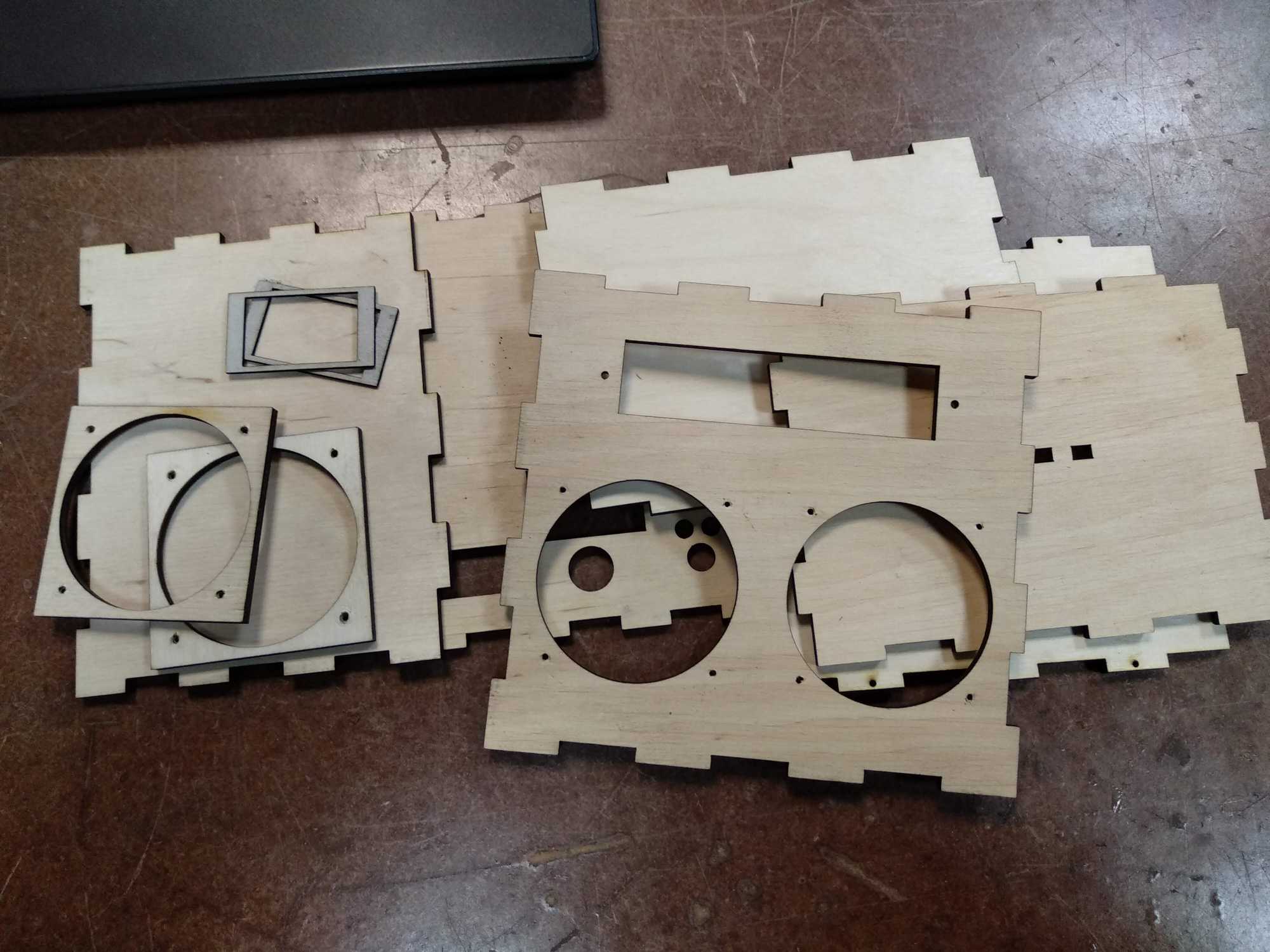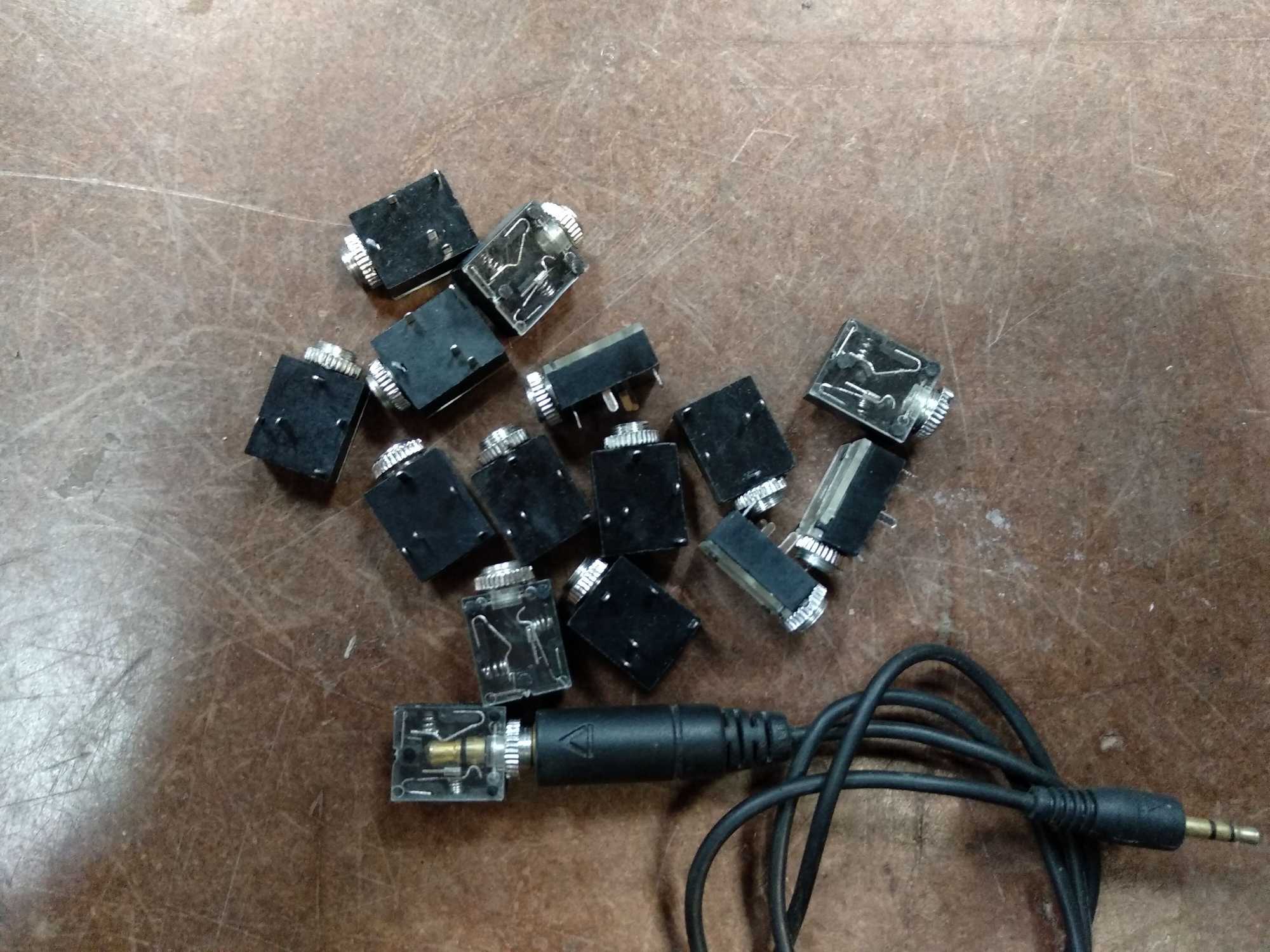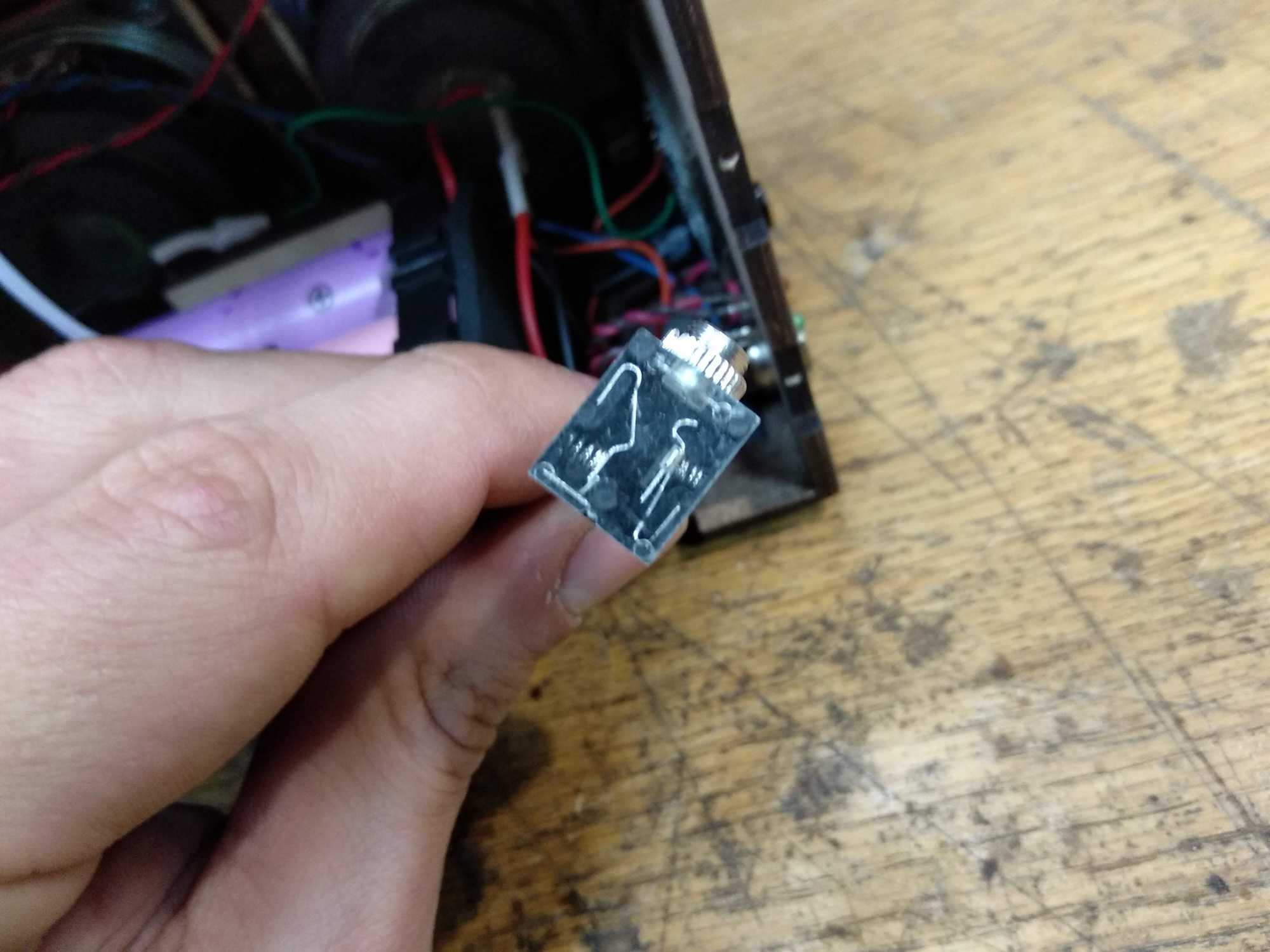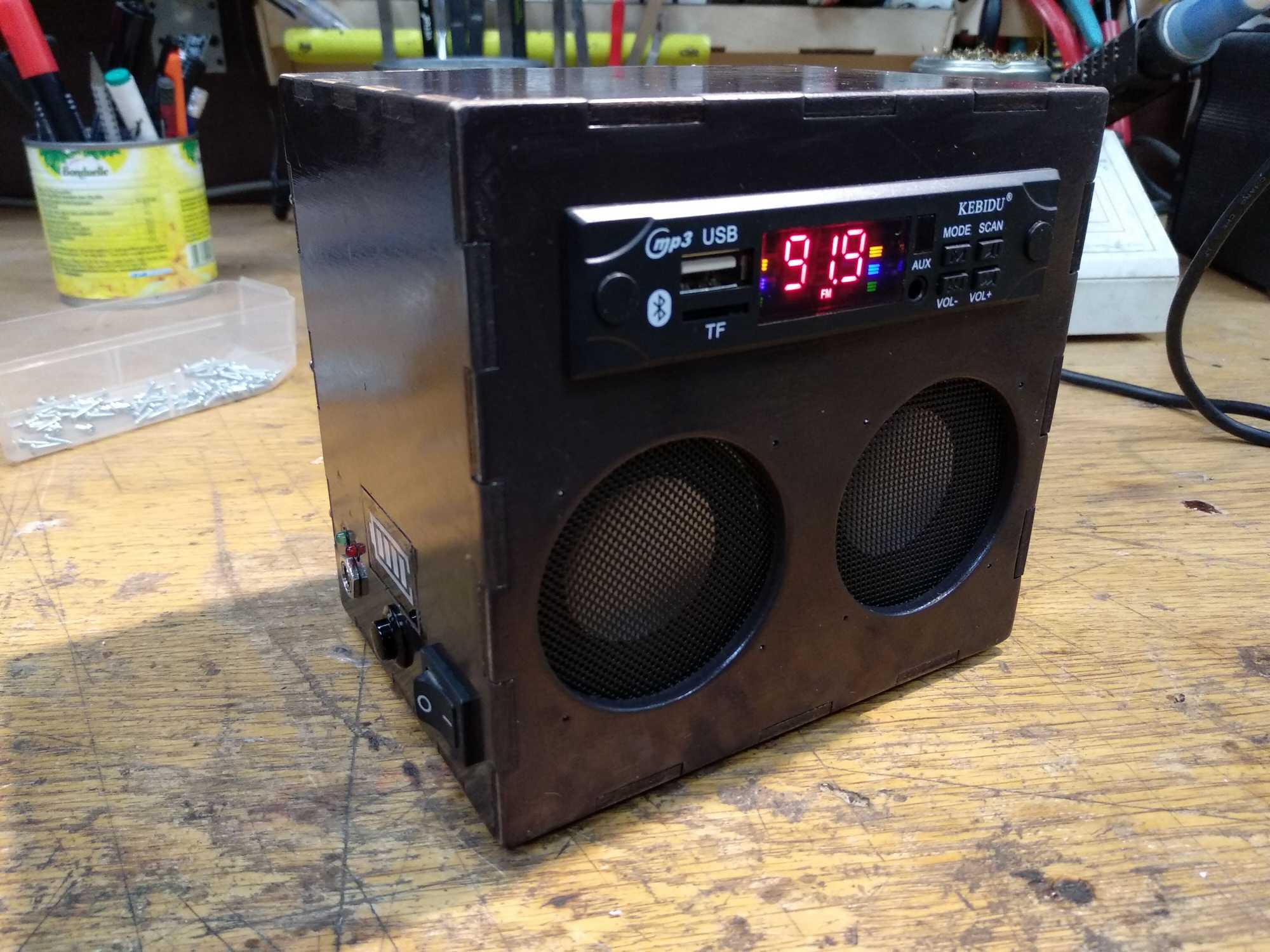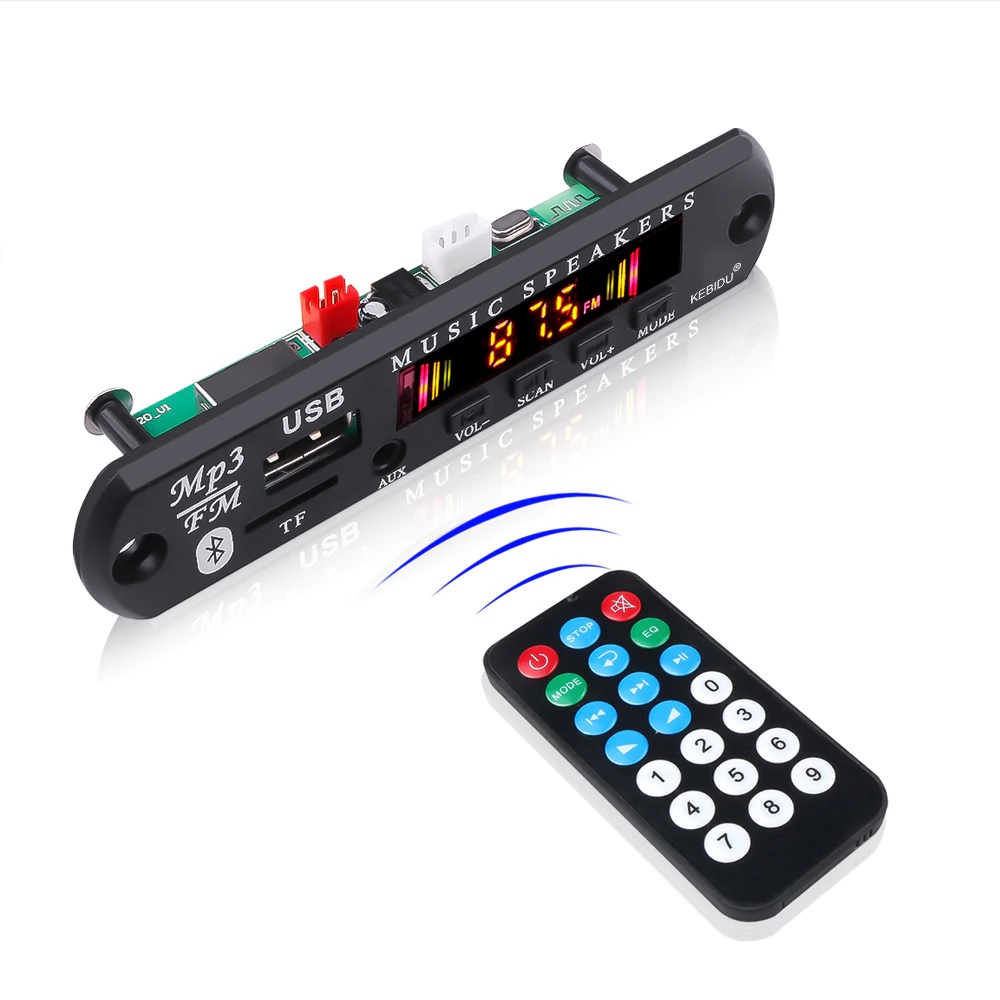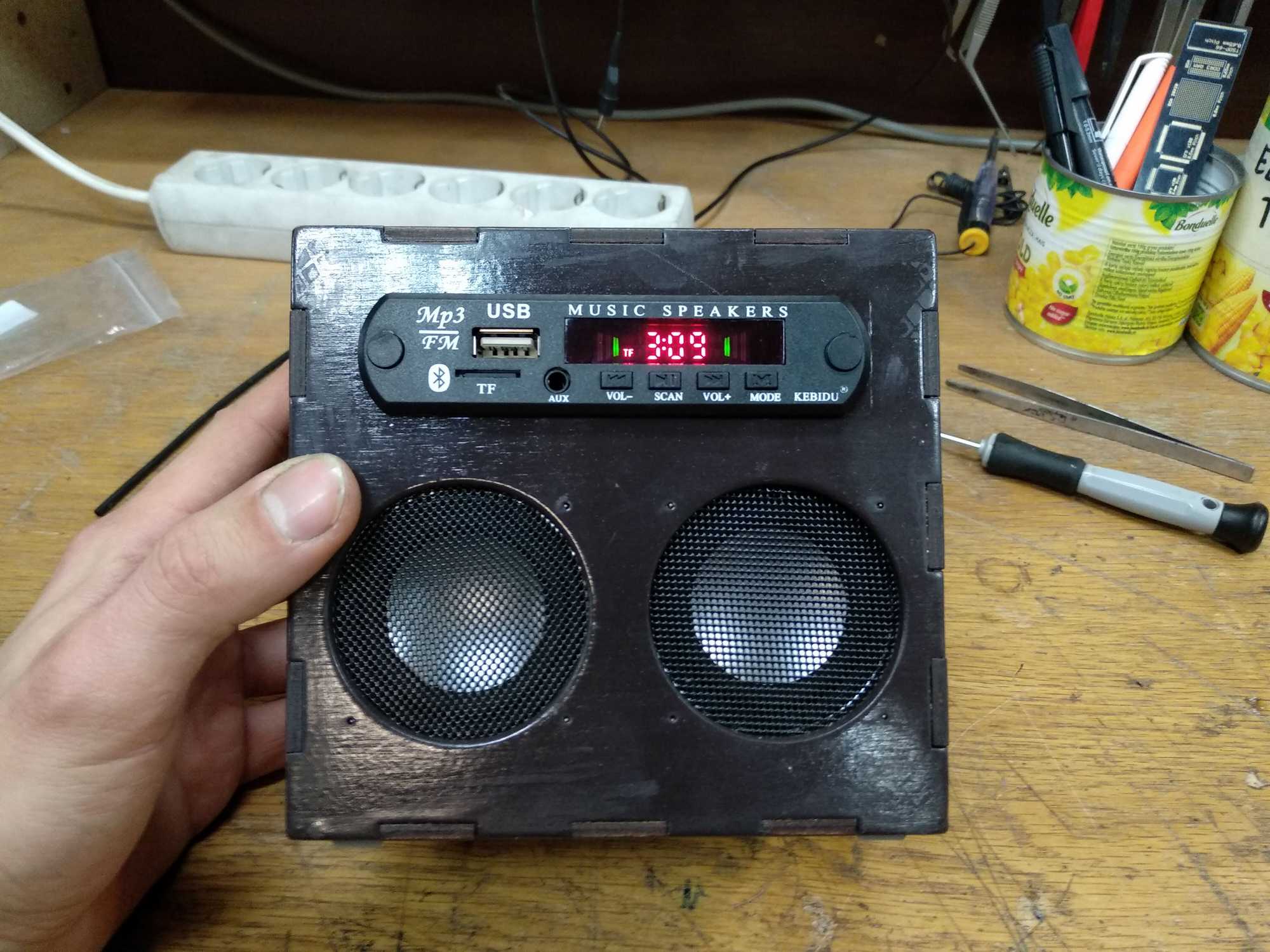A very long time ago, I acquired cheap Microlab desktop speakers from a friend who agreed to trade them in exchange for beer.
At the time I needed them and he didn’t. Right away after plugging them in I noticed that they are pretty shit in quality (would make an annoying humming noise even when powered from a USB charger and the audio quality was terrible), however they are really cheap so… I used them for a while and then set them aside to collect dust.
For those wondering why the speakers made that noise – it’s because of a ground loop. Connecting the speakers through a ground loop isolator would solve this problem.
Now I thought that it would be nice to have those speakers portable for situations where one would be cool to have, but I didn’t need those Microlab desktop speakers. So I thought I could re-purpose them and learn something in the process (like more advanced 3D modeling and how to use a laser-cutter more).
The exact model that I had was Microlab B56 and in the technical specs it says that the speakers are 1.5W each, which is untrue – the speakers are 3W each, but that tiny amplifier probably can’t drive more than that and you can’t expect moderate audio quality from it.
I wasn’t sure how would I go about making it portable, so I went to AliExpress and found an audio panel/interface type of thing that acts as a music player from various inputs and you can connect whatever speakers you want through an amplifier and I also wanted for it to have an audio-out socket, so that I could connect headphones or a better audio system.
Idea here is that all I would need is to get the actual speakers out, order some electronic modules, laser-cut the case and assemble everything together.
I first started off with buying the audio panel. It’s a Kebidu brand and it costs about 2.50€ with a remote control (it’s mind boggling to think how can they (everyone involved in making and selling) make a profit from this product-price ratio).
However it needs an amplifier, so I bought a PAM8406 amp, which has pretty good audio quality and doesn’t generate a hissing noise – makes a clean signal.
Then I bought some other modules like a 5V 1A boost converter (which later proved to be not enough, had to replace it with 1.5A), a charging module and a few other things.
This was the time I learned the hard way that the written amperage should be cut in half to have an actual amperage. I learned that after testing them on a load tester and saw that the 1A boost converter is actually ~0.6 amp and the other 1.5A one is ~0.95 amps…
The audio panel has radio (which is kinda shitty, probably needs a better antenna), Bluetooth, USB, microSD and AUX input. With the remote you can shut it down, stop, pause music (even through Bluetooth), change an equalizer setting and some other small things.
While I was waiting for parts to arrive, I made a preliminary 3D model based on how I thought it would be like.
And when I had everything, I finished the model by making required holes just right. The modeling tool I use, as I always do, is OnShape – a very simple and powerful online tool.
The model is public, you can copy it to your workspace if needed from here.
I wanted to protect my speakers from accidents, since it’s portable and stuff, but I didn’t find any speakers grills the size that I wanted, so I ordered 3″ grills and cut them up.
Then I made a battery from old laptop cells (18650) – after measuring the capacity with the same tool I used for Remote-controlled outdoor light project (should amount to ~3.5Ah, which I think would be enough for ~4+ hours of constant play).
It took me several revisions of various parts to fit everything properly and finally I painted the parts in dark brown and glued them together. I of course didn’t glue up the backside, instead I used 2.2mm screws after drilling 2mm holes.
Now all that was left was to connect everything together. And to test, I connected everything on the table just to see how it sounds.
I was surprised when I heard that the speakers sound much better and louder than they were connected to a PC.
Right away I started to assemble everything inside and I taped up the ends of my battery to prevent accidental shorting of it.
I also wanted for my speaker to have a means of outputting its audio to a bigger speaker systems and be like sort of an actual media center, therefore I added a 5 pin audio socket. I connected it before the amplifier.
The final touch to make it a mini audio-center — rubber pads:
And the final result looks like this:
Pretty nice looking speaker!
However there are some problems :( I noticed that it’s a bit buggy and only AUX and Bluetooth modes work normally until eventually it started to shut off randomly in all of the modes.
It produces a very small frequency. I isolated it to two things that could be wrong – either I have a ground loop somewhere, or the 5V boost converter warps the signal. I probed a few lines in my circuit and found out that if I connect 5V to the panel from a different power source, the noise disappears.
I was suggested to maybe add a capacitor right after a boost converter, that would even out the power signal. So we added two 15F 2.7V supercaps but that didn’t change anything. Then we saw that there is a free spot on the panel PCB for a small capacitor, so I added a 1000μF capacitor (don’t know what it’s supposed to do, but we reasoned that maybe the manufacturer decided not to include it to save on the production cost?) and that also didn’t change anything.
When we finished testing it was 3 in the morning already and I just decided it’s not a big issue to debug anymore – you can barely hear the hissing, but it’s there :P
Also after ~4 minutes of listening to radio or music from the USB flash drive the thing just shuts off and you’d need to disconnect the power for it to work again. Now this isn’t the problem with my boost converter not being able to supply enough current, because I tried with a variable voltage power supply and even giving it 12V 1.5A (which is more than enough) and the same thing would still happen, so it’s definitely a problem with the device itself.
I have ordered another version of that panel – same brand, but a different version.
And it is perfect – does not shut off randomly lol sound adjustment is better (steps up or down slower) and it always remembers the position it stopped playing at even if I turn the speaker off by cutting the power to it completely. After starting up, it will continue playing from where it finished.
However, it doesn’t have things like repeat, shuffle or folder skip. It might be important for some, I only play long mixes from the SD card, so it isn’t a big problem for me.
And that’s it – 6W speaker with radio, bluetooth, AUX, USB and microSD slots that in the end cost me 10€, or 7€ if I got the parts right the first time.


